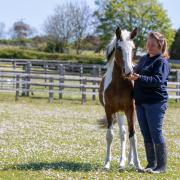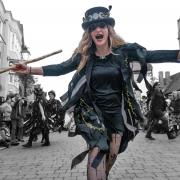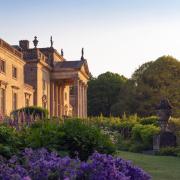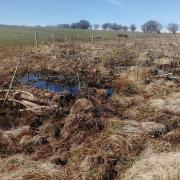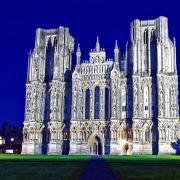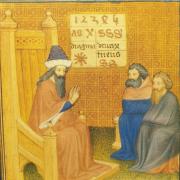Join Stephen Roberts as he reflects on the service and sacrifice of those in Somerset who defended our freedom
Poppies of many colours

‘In Flanders fields the poppies blow, Between the crosses, row on row’ … ‘If ye break faith with us who die, We shall not sleep, though poppies grow, in Flanders fields’. Those lines from either end of John McCrae’s poem ‘In Flanders Fields’ are perhaps the most evocative written connection between WW1 and the red poppy which has become the enduring symbol of Remembrance. The origin of the poppy’s symbolic link with our November rituals lies with the landscapes of WW1, where poppies are a common sight. McCrae captures that. The poppy was officially adopted by the Royal British Legion in 1921 with some nine million sold that year in the first ever poppy appeal. This year it will be 40 million.
The traditional red poppy harks back to Flanders poppies and has been adopted as a symbol of Remembrance and hope for a more peaceful future. They also demonstrate support for our armed forces community that has continued to serve in conflicts in modern times. Although the vast majority will wear a red poppy this year there are other colours representing subtle differences. The white poppy remembers all victims of war, military and civilian, indicates a commitment to peace, but also challenges any glamorising of war. There is a focus on ending war. The purple poppy remembers the animals who have been victims of war, having been drafted into war service. It is estimated half a million horses died alongside British forces in WW1 with carrier pigeons and dogs also dying on various fronts. A black poppy is most commonly associated with commemorating the black, African and Caribbean communities’ contribution to the war effort both as service personnel and civilians. Wells is always a good place to see creative displays of poppies regularly utilising the Boer War memorial as a focus point. Although that war predated the symbolism of poppies, it was nevertheless the first conflict that saw war memorials erected in large numbers in its wake.
Thankful Villages

Of some 16,000 villages in England only 50-odd are regarded as ‘Thankful’, namely they didn’t lose any servicemen or women in WW1.
A smaller number are deemed to be ‘Doubly Thankful’ because all their military personnel came home from WW2 as well. Somerset has more Thankful Villages than any other English county, nine, two of which, Stocklinch and Woolley, are ‘Doubly Thankful’.
Most communities have a war memorial starkly listing the names of the fallen, a monument that becomes the focus of Remembrance each November. War memorials first began appearing in larger numbers after the 2nd Boer War (1899-1902) but it was WW1 which saw them proliferate.
Rodney Stoke, betwixt Cheddar and Wells, has its Grade I Listed church of St Leonard at the village’s west end. Here I found a thanksgiving window in the south wall commemorating the return of 17 men and four women from WW1. The stained glass is colourful, yet the eye is drawn to the scroll at its foot: ‘All glory be to God who in his tender mercy has brought again to their homes the men and women of Rodney Stoke who took part in the Great War 1914-1919’.
Below the window is a modern framed roll of honour, listing all 21 names. Rodney Stoke was not to be so fortunate in WW2, however, and there are two memorials recalling losses in that conflict. Stocklinch was fortunate in both wars.
A plaque on the village hall proclaims: ‘Stocklinch a thankful village – All who served in World Wars I and II returned home safely’. There are two churches called St Mary (the Virgin and Magdalene) in the village, but the smaller of the two, Grade I Listed St Mary Magdalene contains memorials for both wars. Somerset’s Thankful Villages are: Aisholt, Chantry, Chelwood, Holywell Lake, Rodney Stoke, Shapwick, Stocklinch, Tellisford and Woolley.






